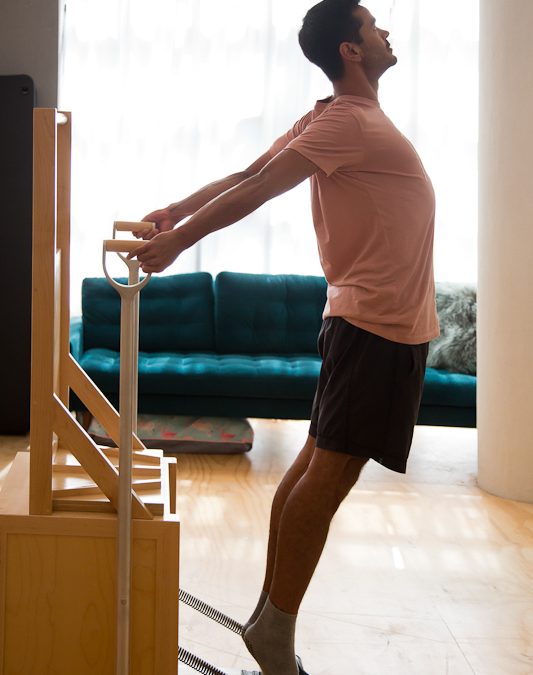Over the years as a teacher of movement and the Pilates method I have learned to have multiple approaches running concurrently. Some clients find physical nirvana when they let go and some, when they control. I’ve learnt to manage them and also to set them free. BUT back extension … what is going on here, why is it so hard to teach well? Finding comfort and optimal subjective form is of course, deeply personal and what can work on Wednesday doesn’t work Thursday. We know what to do, but we’ve all been that person craning the neck forward with an uncomfortable low back. Then again, does it even matter how you ‘extend’?
Well, it matters to me. I’m all for the new-wave movement practitioner ideology of ‘motion is lotion’ with the caveat that at TMR form and function should be considered and to me, form is king. Once the basics are covered, I have no shame in refining, developing and maturing in the movements of the Pilates method and human movement.
A body that has knowledge of the basic movements (flexion, extension, side bend, rotation etc.) and how to create them in a unique environment (the body of the individual) without succumbing to work-arounds and compensatory patterns or just old-school delusion is a body that can weather any storm. I’m coming back to the marketing concept of the early 2000s that being a Pilates client is the ultimate insurance policy against pain, premature ageing and injury.
In my experience, what clients interpret as back extension is in fact leading with the head and pushing hard up against a bony barrier to ‘fake’ thoracic spine extension. Often, this FAKE NEWS goes a step further and the shoulders round forward. When you look close up, you can see that the thoracic vertebrae aren’t ‘extended’ and the skin at the back of the neck is creased AND there is unnecessary tension in the body. Ew. If your body has a slight backwards curve in the upper back (a kyphosis) it’s even easier to fake the extension feeling by jamming into your lower thoracic spine and staying both flexed in the upper spine and even rounded in the shoulder. Unfortunately, this isn’t constructive extension and this loop of FAKE NEWS reiterates to the brain how to cheat.
Your brain (which is brilliant) wants to offer you the path of least resistance. Ignore it. DANGER. DANGER. If you take your ego out of the picture and go to the skeletal design and visualise the joints maybe you can strip it back and find the true elements of extension? Don’t listen to the information coming from the eyes, peel the spinal joints up off the mat instead and feel the muscles on your back do their job.
If you’re looking to build back extension or back bending one option is to start with the components.
- Scapulae swing, control and endurance
- Thoracic mobility and extension control
- the elusive elements of coordination and precision
- PRO TIP: enjoy a slice of humble pie and try to extension exercises without pushing with your arms. This will show you were you are currently at (in terms of controlled extension) and give you something to work with when you integrate ‘arm-pushing’ back extension exercises
The benefits of healthy back extension go well beyond the Pilates exercises and ‘shapes’. It translates into every day movement, contributes to optimal shoulder health and mobility and prepares you for higher level physical endeavours. Plus, with our predilection for sitting, extending the body and stepping into the ‘back line’ is a fantastic tool for rebuilding from our i-device fuelled lifestyle.
I really enjoy building efficient extension and healthy backbends, feel free to drop in for a session at the studio or online!
Nicholas
p.s. Confused about round/flexed spine positions? Just remember… round does not equal scrunch and hunch. More info next time.

